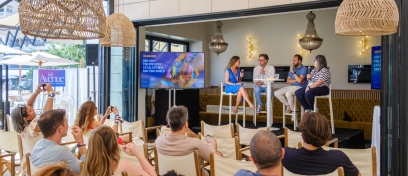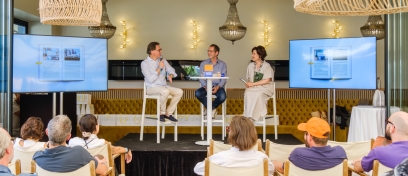For brands
Top Product Categories in OOH: The Big Spenders
Looking at a global OOH ad spend in more detail, we wanted to examine which categories are the big spenders and which are the fast growers. However, global OOH ad spend by category is hard to come by. But, with our presence in over 75 countries we are able to get a good indication of macro trends by category within the OOH market overall. We have noted a consistency in the biggest spending categories over the past five years. Cadbury's, Mondelez, Dynamic content integrated live sales data to contextualise messaging to the local Tesco store, JCDecaux UK
Cadbury's, Mondelez, Dynamic content integrated live sales data to contextualise messaging to the local Tesco store, JCDecaux UK
 Estée Lauder, MCDecaux, Japan
Estée Lauder, MCDecaux, Japan
These green and conscious brands turn to OOH not only to build awareness and encourage trials. Notably, OOH has by far the highest ad recall 30 minutes before purchase, which these brands make the most of at the point of purchase.
Retail
Retail brands are consistently the top spending category in OOH. The intense competition within the market means that retailers must maintain a constant dialogue with their customers to remain in their consideration set.
Effective CTAs through mass reach and frequency
Mass reach and frequency of OOH help retailers build brand awareness and ensure differentiation from their competitors, in addition to increasing footfall in stores. Communicating a variety of timely call-to-action (CTA) messaging for launches, sales, special promotions or events can be combined with proximity placement for extra impact.Proximity placement and targeted messaging at the point of sale
OOH’s proximity networks are a unique asset of the medium, which allows brands to deliver call-to-action messaging at key moments in the consumers’ decision-making process. Furthermore, OOH offers retailers the possibility of geographically-targeted messaging that can be tailored to different store locations and different audiences further increasing drive-to-store.OOH for flexible and responsive campaigns
DOOH allows advertisers to respond to market changes and revise anything within their campaign from the creative to their placement easily, frequently and instantly. Furthermore, Dynamic campaigns have allowed retailers to tap into data and customisation of campaign messaging is limited only by imagination. Advertisers can react instantly to various market factors, from live availability to competitors’ activity to deliver continuously relevant messaging to their audience.Entertainment, Leisure & Film
A blockbusting spender, this category continues to use OOH ‘s mass reach and quick cover-build. The enormous production costs of these products require corresponding sales.Quick mass coverage builds awareness
Box office receipts can make or break a film. High competition and fast turnover of releases give distributors a short window to attract cinemagoers. In the case of TV and Video-on-Demand (VOD), campaign timing and placement is key to building anticipation. In both cases, OOH’s quick cover-build ensures mass awareness and timely reminders.Entertaining, interactive campaigns ensure high recall
Entertainment brands have embraced all developments in OOH and Digital OOH (DOOH) to ensure that their campaigns accurately reflect the character of the product. Campaigns are no longer constrained to traditional OOH; entertainment brands join their audience on the street. From interactive digital executions to Dynamic social media OOH campaigns, these campaigns entertain the audience to prep them for the release of the feature.The shock and awe effect
The entertainment industry is a master of building up anticipation for new releases, but they must still compete for audience attention. Campaigns are well-packaged within the media mix, including international coverage, custom executions, and digital and social media integration to cover all points within a daily consumer journey. Importantly, the physical nature of OOH allows entertainment companies to interrupt the daily routine of their audiences with visually arresting, large-scale, experiential installations that build fame and word-of-mouth.Personal Care
The Personal Care category analysis encompasses a wide range of high-street and luxury grooming products, for both men and women. Many products and brands target a mass market, but there is an increasing move toward developing niche lines such as organic products, luxury products, as well as ‘masstige’ – the more affordable prestige brand lines.
OOH drives product launch
A constant release of new products and brand variants means that personal care brands must work harder to differentiate themselves and build brand loyalty. Sales volumes are often key to a brand’s success. Product launches can be decisive, so these brands use OOH’s fast mass reach and high frequency, as well as proximity networks to dominate the ad landscape. Consumers even rely on OOH to tell them about the latest and greatest products on the market for them to try.Personalisation of brands
Over the last few years, to stand out, many brands have focused on developing a strong brand personality and an emotional connection with their consumer by highlighting a brand’s authenticity. From P&G’s Always #LikeAGirl to Unilever’s Dove #speakbeautiful campaigns, brands have embraced social media and personalisation to become social brands. Also, brands integrate social and OOH to effectively drive to online and increase engagement. Digital OOH (DOOH) brings brands even closer to consumers shifting brand storytelling to brand participation.Green growth
Growing awareness of health and environmental impact of products is increasing demand for organic, green and luxury brands that are seen to be of higher quality and with purer ingredients.These green and conscious brands turn to OOH not only to build awareness and encourage trials. Notably, OOH has by far the highest ad recall 30 minutes before purchase, which these brands make the most of at the point of purchase.



